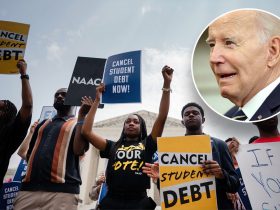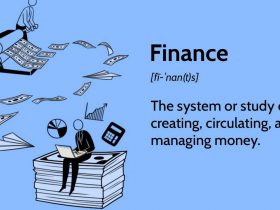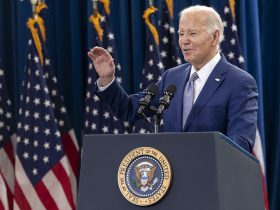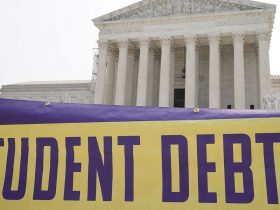As part of pandemic-relief efforts, the Education Department paused student loan payments and interest accumulation for millions of borrowers. But many took on new debt during that time and could soon be required to add student loan payments to their budgets, according to a study by TransUnion. “These borrowers will experience a payment shock as they attempt to recalibrate their monthly budgets to accommodate this new payment,” TransUnion said in its report.? During the pandemic, 53% of consumers with student loans opened credit cards, according to the TransUnion report. Meanwhile, 31% established retail card accounts and 15% took out mortgages. Additional student loan bills will vary once the moratorium ends, but one in five federal student loan borrowers is expected to add a $500 monthly payment and about 50% are expected to add $200, TransUnion said.? While the resumption of student loan payments could put a strain on the budgets of millions, older borrowers are expected to owe more on their student loan payments, according to the study. Thirty percent of Baby Boomers are expected to owe more than $500 as opposed to 20% of Millennials and 5% of Gen Z.? Overall, 40.6 million consumers had student loans totaling $1.6 trillion in balances as of May 31, according to the study. Out of these, about 26.8 million borrowers with federal student loan debt totaling $1.1 trillion are expected to resume payments for the first time since the beginning of the moratorium, or for the first time if they weren’t in repayment before the pause, TransUnion said.? Interest is set to begin accruing on federal student loans subject to the moratorium in September and the first payments are due in October.? “The majority of consumers with a student loan have not been required to make payments for the better part of three years,” Liz Pagel, senior vice president and head of TransUnion¡¯s consumer lending business, said in a statement. “Payment amounts will vary, but many of these consumers have taken on additional debt since the last time they had to pay their student loans. It¡¯s important for both lenders and consumers to be prepared for this new payment shock.” If you¡¯re having trouble making payments on your private student loans, you won¡¯t benefit from federal relief. But you could consider refinancing your loans for a lower interest rate to lower your monthly payments. Visit Credible to get your personalized rate in minutes.? BIDEN ASKS STUDENT LOAN COMPANIES TO PREPARE FOR END TO PAYMENT PAUSE Even though the Supreme Court struck down President Joe Biden¡¯s student loan forgiveness plan, the administration has announced initiatives to offer some kind of relief for millions.? Among these is an “on-ramp” repayment program set to run from October 1, 2024, to September 30, 2024. “Financially vulnerable borrowers who miss monthly payments during this period are not considered delinquent, reported to credit bureaus, placed in default or referred to debt collection agencies,” the White House said in a statement. The president also introduced a new income-driven repayment (IDR) plan. The Saving on a Valuable Education (SAVE) plan could lower borrowers¡¯ monthly payments to zero dollars, cut monthly payments in half and save those who make payments at least $1,000 a year, the White House said. Borrowers can enroll in SAVE this summer before the repayment pause ends. These are some SAVE key points, according to the White House:? “The Department of Education finalized our new income-driven repayment (IDR) plan, which would be the most affordable repayment plan in our country’s history,” Secretary of Education Miguel Cardona said in a live press webinar. If you have private student loans, you won¡¯t benefit from federal income-driven repayment plans. But you could reduce your monthly payments by refinancing your private loans to a better rate. Visit Credible to compare options from different lenders at once, without affecting your credit score. STUDENT LOAN SCAM ATTEMPTS LIKELY TO RISE AFTER SCOTUS DECISION: FTC Despite the recent SCOTUS decision, President Biden said he’ll continue to pursue widespread student loan forgiveness.? The administration said it plans to provide relief through the Higher Education Act (HEA) of 1965, which allows the Education Department to “compromise, waive or release loans.” Previously, SCOTUS ruled that the president could not justify widespread student loan forgiveness under the Higher Education Relief Opportunities for Students (HEROES) Act of 2003. That law allows the Department of Education to modify rules that could forgive student loan debt during national emergencies such as the COVID-19 pandemic.? But in the Supreme Court¡¯s opinion, Chief Justice John Roberts wrote that while the Education Department could make “modest adjustments and additions to existing provisions,” it could “not transform them.” Roberts concluded that the president¡¯s student loan forgiveness plan “created a novel and fundamentally different loan forgiveness program.” The Biden administration’s plans for student loan relief are ongoing.? “We started the process to provide relief to as many people as we can, as fast as we can, through the rulemaking process,” Cardona said in an email to borrowers. “Under the law, this path will take time.” If you have private student loans, you could consider refinancing your loans to a lower rate to reduce your monthly payments. Visit Credible to speak with a student loan expert and get your questions answered. SUPREME COURT STRIKES DOWN BIDEN’S STUDENT LOAN FORGIVENESS PLAN ¨C WHAT’S NEXT? Have a finance-related question, but don’t know who to ask? Email The Credible Money Expert at [email protected] and your question might be answered by Credible in our Money Expert column.
Student loan borrowers took on new debt during payment pause: report













Leave a Reply